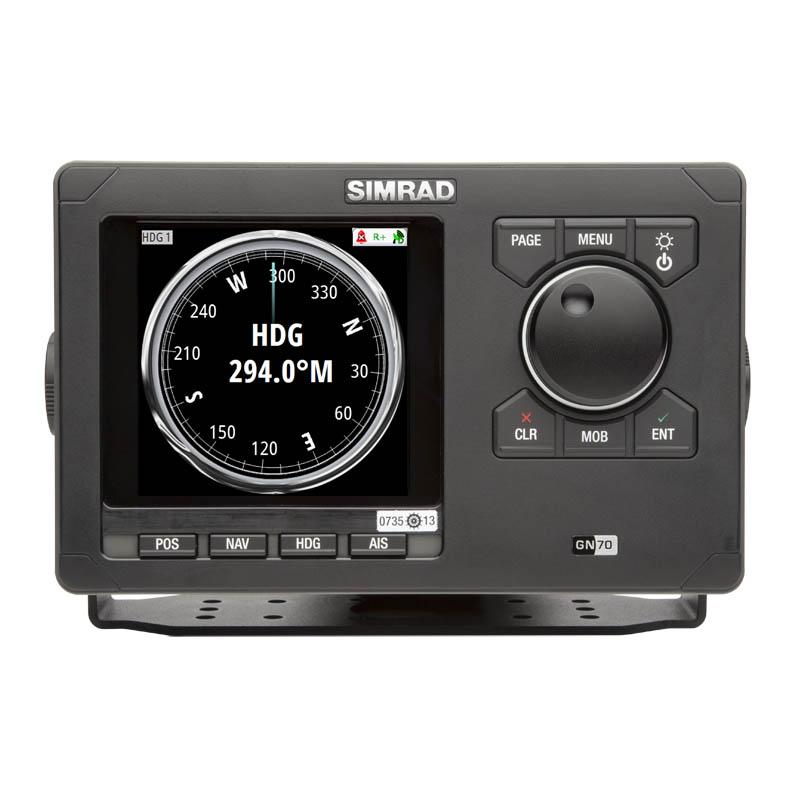Guiding Automation: The Critical Role of Navigation Systems in Industrial Operations

Category: Navigation
In the fast-paced world of industrial automation, precision in movement and direction is just as important as measurement and control. Whether it’s guiding an autonomous robot through a warehouse, positioning a crane with pinpoint accuracy, or directing an AGV (Automated Guided Vehicle) across a factory floor — navigation systems are the intelligence that ensures motion happens smoothly, safely, and efficiently.
From GPS-guided logistics to sensor-based robotic mapping, navigation technologies provide the awareness and coordination that keep automated operations on track.
What Is a Navigation System?
A navigation system is a combination of sensors, software, and control algorithms that determine the position, path, and movement of machines or vehicles within an environment.
In automation, navigation plays a vital role in enabling machines to move autonomously, avoid obstacles, and execute tasks with accuracy. Modern navigation systems integrate data from multiple sources — such as GPS, LiDAR, cameras, and inertial sensors — to build real-time situational awareness.
These systems are not just about movement — they’re about intelligence, adaptability, and efficiency.
How Navigation Systems Work
Navigation systems work by sensing the environment, calculating position, and planning a path for controlled movement.
Here’s how it typically functions in automation:
- Sensors collect environmental data (distance, direction, orientation).
- Positioning units like GPS or encoders determine current location.
- Path-planning algorithms calculate the optimal route to a target.
- Control systems adjust movement to stay on course and avoid obstacles.
For example:
- A robotic arm uses encoders to precisely navigate joint angles.
- An AGV follows magnetic tracks or laser-guided paths across a warehouse.
- A drone uses GPS and vision sensors to maintain stable flight and positioning.
These systems ensure that every motion in automation — from small robotic actions to large-scale logistics — is guided with precision.
Types of Navigation Systems in Automation
Different automation applications require specific types of navigation systems. Here are the key categories:
- GPS-Based Navigation – Ideal for outdoor robots, vehicles, and drones.
- Vision-Based Navigation – Uses cameras and image recognition for indoor guidance.
- LiDAR & Radar Systems – Map surroundings with laser or radio signals for obstacle detection.
- Inertial Navigation Systems (INS) – Use accelerometers and gyroscopes to track motion in real-time.
- Magnetic & Tape-Guided Systems – Common in factory AGVs for fixed path following.
- Simultaneous Localization and Mapping (SLAM) – Enables autonomous robots to map unknown environments while navigating them.
Why Navigation Matters in Industrial Automation
Navigation systems bring intelligence and coordination to automated movement. Without them, machines would lack direction, context, and safety awareness.
Key benefits include:
- 🧭 Precision Movement: Enables accurate and repeatable positioning.
- 🤖 Autonomous Operation: Allows robots and vehicles to move without human input.
- ⚙️ Process Efficiency: Reduces travel time and enhances workflow optimization.
- 🛡️ Safety & Collision Avoidance: Prevents accidents in busy industrial environments.
- 🔗 Integration with Control Systems: Connects seamlessly with PLCs, sensors, and IoT networks.
Common Applications of Navigation Systems
Navigation technologies are now a cornerstone of Industry 4.0. You’ll find them across:
- Autonomous Mobile Robots (AMRs) – For smart material handling in factories and warehouses.
- Automated Guided Vehicles (AGVs) – Used in logistics, assembly, and packaging lines.
- Drones & Inspection Robots – For surveying, monitoring, and asset inspection.
- CNC Machines & Robotics – For precise movement control during manufacturing.
- Smart Warehouses – Coordinating real-time inventory transport and location tracking.
- Transportation & Logistics – Managing fleet operations and route optimization.
The Future of Navigation in Automation
As industrial systems evolve toward full autonomy, navigation technologies are becoming more adaptive, connected, and intelligent.
Emerging trends include:
- 🌐 AI-Driven Path Planning: Smarter algorithms for dynamic environments.
- 🤝 Collaborative Navigation: Multiple robots coordinating in shared workspaces.
- ⚡ Sensor Fusion: Combining data from multiple sources for higher accuracy.
- 📡 Edge & Cloud Connectivity: Real-time navigation data accessible anywhere.
- 🧠 Self-Learning Systems: Robots that improve navigation over time.
Closing Note
In automation, navigation is the art of movement with purpose. It ensures that machines not only move — but move intelligently, safely, and efficiently.
By guiding motion with precision and awareness, navigation systems transform automation into a dynamic, coordinated ecosystem where every movement matters.
As industries advance toward full autonomy, navigation will remain the invisible force steering automation toward greater accuracy, reliability, and intelligence.
📞 Call us: +1 (234) 288 1755
📧 Email: [email protected]
- Art
- Causes
- Crafts
- Dance
- Drinks
- Film
- Fitness
- Food
- Games
- Gardening
- Health
- Home
- Literature
- Music
- Networking
- Other
- Party
- Religion
- Shopping
- Sports
- Theater
- Wellness



